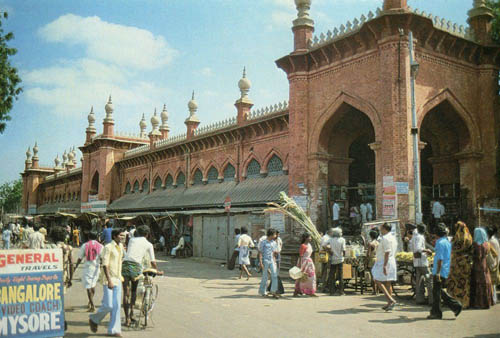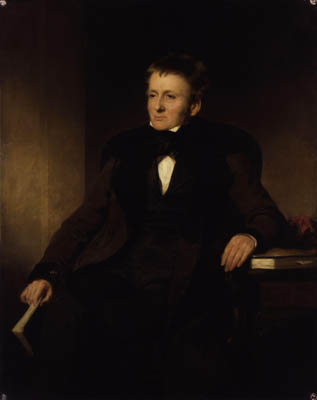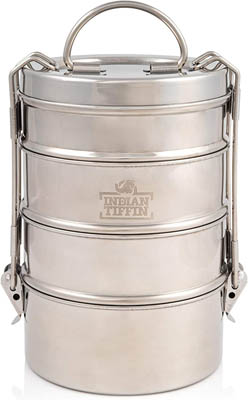A note on tiffin.
Light lunch?
Tiffin is a tantalizing term. The Oxford English Dictionary defines it with customary authority: “In India and neighbouring eastern countries, A light midday meal; luncheon.” According to Hobson Jobson, the invaluable annotated dictionary of Raj usage that first appeared in 1886, tiffin is “Luncheon, Anglo-Indian and Hindustani, at least in English households. Also to Tiff, v. to take luncheon.” (Hobson Jobson 917)

Time for tiffin?
A bright light.
When Thomas De Quincey addressed the subject of tiffin, or one of its subjects, in 1839 he considered it a broader and better practice; a light meal taken at any time during the afternoon, something superior to lunch. If you call on anyone in Britain who spent time in the Raj, he found,
“at any hour from two to five, he insists on your taking tiffin: and such a tiffin! The English corresponding term is luncheon: but how meagre a shadow is the European meal to its glowing Asiatic cousin! Still, gloriously as tiffin shines, does anybody imagine that it is a vicarious dinner, or ever meant to be a substitute for dinner?” (De Quincey 6)
Nearly nobody cites De Quincey on the topic, an odd oversight because Hobson-Jobson quotes his enthusiastic endorsement at length and nearly everybody who addresses tiffin and its variant tiffings cites Hobson Jobson. None of them, however, addresses anything close to the entire range of writers on the subject that the dictionary discloses, many of them officers in the Indian Army but also Thackeray (in Vanity Fair) and lesser novelists including Laetitia Maria Hawkins.
What they ate.
At a glance the only modern author who appears to have addressed tiffin in any detail is Jennifer Brennan, who devotes a chapter to the subject in her exemplary and engaging Curries and Bugles, which is, as her subtitle indicates, a memoir and cookbook of the Raj. Although the chapter runs to thirty nine pages it devotes less than two of them to a description of tiffin as concept. Nothing wrong with that; the ensuing pages cover a series of superb dishes to eat in shining glory.
Brennan’s tiffin, taken in the Raj itself for the most part during the twentieth century--again, Curries and Bugles is for the most part memoir--is not the excuse for hospitality it had been in Romantic England. Instead Brennan describes it as domestic respite from endless social obligation, “a chance for husbands and wives to eat together if they wished.” “If,” however, “guests were invited for the meal” it lost its identity as tiffin “and would be formalized into luncheon.”
But then a day arrives to transform lunch back, and it is reminiscent of the earlier English occasion that De Quincey adores. “The exception,” Brennan explains, providing the best extant treatment of the Romantic practice with Indian adjustment, was
“the relaxed Sunday tiffins, where the ‘done thing’ was to eat until you were uncomfortably full, and then fall asleep on the nearest bed or couch if you didn’t make it home. Certain unwritten rules applied to tiffin. Salads were commonly served, particularly in the hot weather, and curry was a common occurrence.”

De Quincey
Families taking tiffin favored “unpretentious dishes that often had their beginnings in the many counties and shires of the British Isles” along with pickles and relishes. Cooks often based tiffin on leftovers that
“appeared under pastry crusts or minced into cutlets and meatballs. ‘Eshepherd’s pie’ was the dish that every kansamer could produce at the drop of a topee. Fruit fools, jellies and ice-creams brought the meal to a close.” (Brennan 80)
A khansamer was the cook; he might wear a pith helmet. As for eshepherd’s pie, no typo (Brennan includes four references), it is the Raj interpretation of the British classic via the addition of bell pepper, black olives, tomato and Subcontinent spice.
Kaveri Ponnapa refers to (a capitalized) Esheperd’s pie, but apparently nobody else; its etymology remains unremarked but the altered name may stem from an Indian practice of prefacing English words with an ‘e.’ ponnapa foe example refers to “Estarfegs (stuffed eggs!).” (Ponappa)
Although she does not cite Brennan, it appears that Ponnapa has read Curries and Bugles because she lists as typical tiffins cold roast from last night’s dinner, the pickles and salads, Esheperd’s pie itself, the stuffed eggs and unique recipe for ham bathed in gin that Brennan describes among many others from mulligatawny and a spiced tomato soup to fish kebabs and ‘Madras Club quoorma.’
Where it came from.
Carolyn and Chris Caldecott appear to claim the term tiffin originates in India with ‘tiff,’ slang that meant both a tot of diluted booze and a drink of it; tiffing was sipping. At some point, as the quotation from De Quincey infers, tiffin “became a peg on which any culinary indulgence between breakfast and dinner could be hung.” (Caldicotts)
Hobson-Jobson traces a different derivation. It is probably the more reliable source. Tiffin, its authors believe, “Appears to have originated in English or colloquial slang tiffing… to take a little drink or sip. (Hobson-Jobson 919)
Francis Grose, whose invaluable Classical Dictionary of the Vulgar Tongue first appeared in 1785, supports Hobson-Johnson about tiffing, moves on to ‘tiff’ and also discerns multiple meanings for the terms, “eating or drinking out of mealtime, disputing or falling out; also lying with a wench. A tiff of punch, a small bowl of punch.”
In Guy Mannering from 1815 Sir Walter Scott refers to the term as synonymous with a drink: “‘Good-wife’, said Skreigh, gathering up his mouth, and sipping his tiff of punch with great solemnity…. ” (Scott 174) That, however, gets a little late for the current purpose.
So it is likely, as Ponappa notes with some surprise, that “this most Indian of words, is not Indian at all.” (Ponappa)
India takes tiffin, or, tiffin takes India, but how?
Whatever its origin, Hobson-Johnson indicates that use of the term as analog to lunch had become widespread by 1807, on both the Subcontinent and what then was Ceylon, but contradicts De Quincey or nearly so, citing James Cordiner’s Description of Ceylon:
“Many persons are in the habit of sitting down to a repast at 1 ‘o’ clock, which is called tiffin, and is in fact an early dinner.” (Hobson-Johnson 920)
Notwithstanding the expression of a little doubt by Hobson Jobson, the practice of tiffin was not exclusively British. In his East India Vade Mecum from 1810 Captain Thomas Williamson notes that Indian “ladies, like ours, indulge in tiffings (slight repasts) it being delicate to eat but little before company.”
The “always didactic” Hawkins, who held “highly individualized views… often sounds as if her goal is opinion-forming rather than story-telling.” (Orlando) In a faint if previous echo of De Quincey one of her characters, from The Countess and Gertrude, a novel published in 1811,
“ ….detailed the delights of India, and the routine of its day; the changing linen, the curry-combing… the idleness, the dissipation, the sleeping and the necessity of sleep, the gay tiffings, were all delightful to her….”
A year later Maria Graham supports the notion that tiffin was a private meal taken at a fixed time. She wrote in her journal one day that “dinner was hardly touched, as every person eats a hearty meal called tiffin, at 2 o’clock, at home.”
For Captain J. B. Seeley however tiffin was the sociable session that floated in time. “The entreaty of my friends,” he wrote in 1824, “compelled me to remain to breakfast and an early tiffin.”
By inference General Sir Charles Napier, commander of the Indian army, supports the social instead of private rendition, at least for some disreputable people some of the time. “A vulgar man who enjoys a champagne tiffin and swindles his servants,” he warned in 1850, “may be a pleasant companion to those who do not hold him in contempt as a knave, but he is not a gentleman.” (Hobson Jobson 920; emphasis original)
Ponnapa in turn contradicts Hobson-Jobson on timing. “Tiffins in the Raj,” she insists, “were generally taken at noon, and sometimes sent to the Sahib’s office through a bearer,” a portent of practice in twentieth century Bombay and twenty first century Mumbai.
Tiffin becomes a Thing except that unlike Heidegger’s hammer it may be unbroken.
By the middle of the twentieth century in Bombay as it then was called tiffin had fallen out of time in definitional terms but retained its customary ambiguity. That ambiguity is even more enticing because it is different from the shifting meanings that previously had characterized the term. As the Caldecotts note, now “tiffin might mean a packed lunchbox or afternoon tea, a savoury snack or a sweet treat. As long as it is munched between breakfast and dinner, it is simply tiffin.”
Eventually the metal containers, or dhabbas, that evolved to carry tiffin from home to work themselves became known as tiffins. They are wonders of design, usually but not always three or four round steel containers that stack together. Each canister contains a different dish secured by with several clasps that hinge from the bottom; the top canister includes a handle.

Tiffin boxes to go.
Today members of the Mumbai Tiffin Box Suppliers’ Association, or tiffin wallahs, push some 200,000 servings of tiffin, each with two or three different dishes, through the streets. Each wallah carries “hundreds of stainless steel tiered tiffin boxes or dhabbas piled high on handcarts and bicycles.” (Caldecotts)
Tiffin so sweet.
If tiffin has become a near universal culinary term, it also now refers to something specific and sweet, especially in Scotland but also throughout the British Isles. It is an ingenious and addictive dessert that requires no baking, based on crushed digestive biscuits laced with chocolate and cocoa. The commercial confectioner Cadbury has coopted the concept with a chocolate bar, its “Dairy Milk Tiffin.”
In the end there is De Quincey, if you choose.
Tiffin, then, has been many things to many people but in the end it would be best to take it like De Quincey and enjoy the ride.
Tiffin recipes appear in the practical.
Sources:
Jennifer Brennan, Curries and Bugles: A Memoir and Cookbook of the British
Raj (New York 1990)
Carolyn & Chris Caldecott, “Time for tiffin: the history of India’s lunch in a box,” The Observer (17 August 2014)
Thomas De Quincey, “Dinner, Real and Reputed,” Authorama, http://www.authorama.com/miscellaneous-essays-6.html (n.d.) (accessed 1 December 2012) (orig. publ. Blackwood’s Edinburgh Magazine vol. xlvi (December 1839) 815-31)
Kaveri Ponappa, “Tiffin Time,” https://kaveriponappa.com/food/tiffin-time/ (n.d.) (accessed 12 April 2023)
Sir Walter Scott, Guy Mannering: or, The Astrologer (Edinburgh 1815)
Henry Yule & A. C. Burnell, Hobson Jobson: The Anglo-Indian Dictionary (orig. publ. 1886; facsimile Ware Herts 1996)

